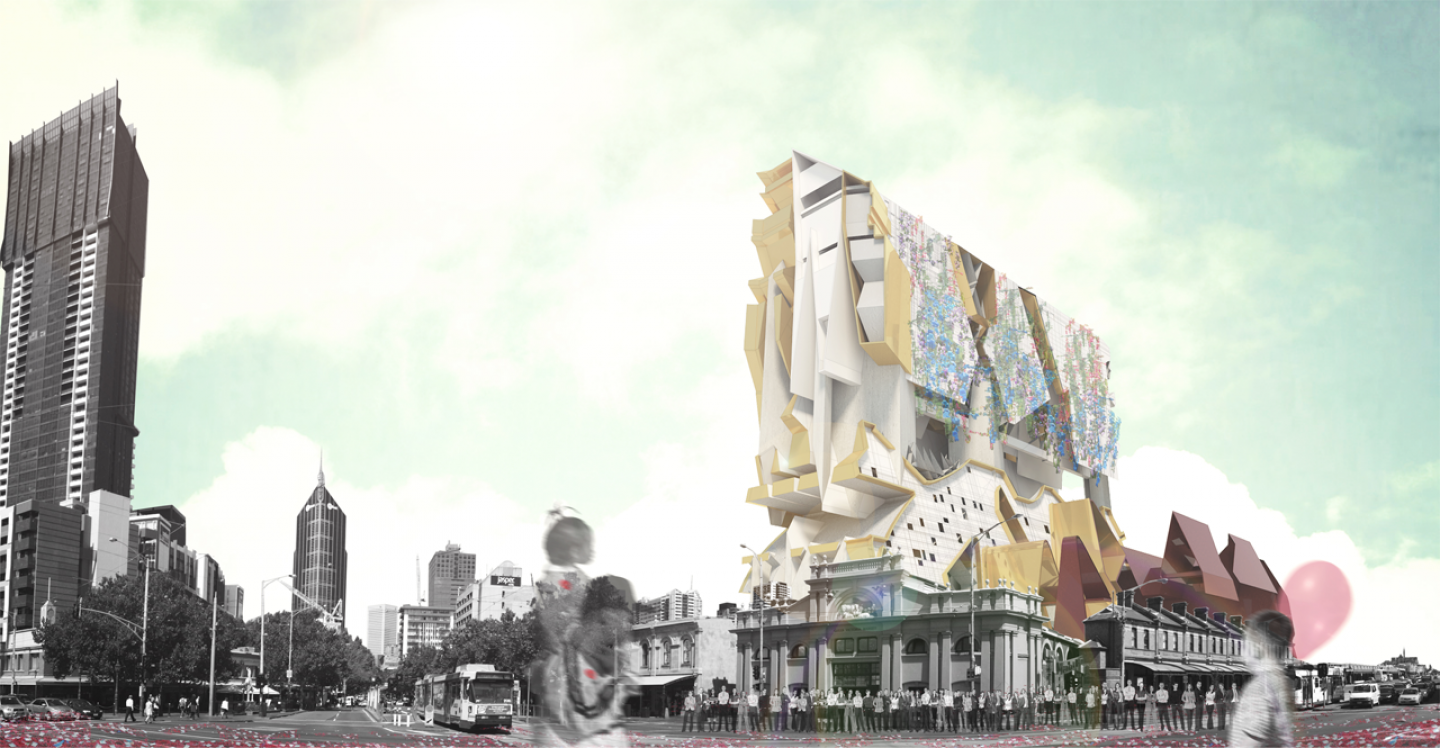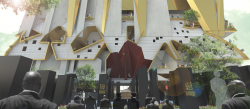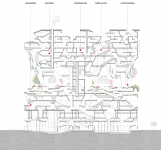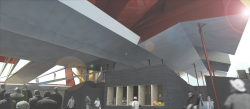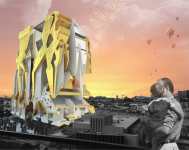The project aims to explore the spatial implications of memory and death, and its current role in urban conditions. A city grows from the needs and demands of its people, and that shouldn’t stop after their passing. The design intends to celebrate the after-death as being a part of our community, a memorial for the city and its inhabitants. The site is the Queen Victoria Markets given the history and memory of the Old Melbourne Cemetery that used to sit on the location. By engaging with the existing role of the markets, a new reading of the typology emerges that has a local implementation but an urban attitude, giving form to overlapping programs and spaces that increase density and intensify the idea of memory. Heights of various forms of memorialization were studied to give a better sense of what a memorial skyscraper could be. There is a notion of procession in the culture of death, and idea of ritual and practice, from preparing / cleansing of the physical body after death, to a funeral service, to the actual disposition. These various activities of death - the watering of flowers, lighting of candles, etc. - are celebrated within the project. In generating the form, the project adapts a strategy that refers to information from site and city that are relevant to remembering death and what was there. These layers of memory include the Old Melbourne Cemetery plan, the mapping of memorials in the city, and the urban grid of the Melbourne General Cemetery. From this process of overlapping these layers of information, I then tested and from it created genetic variations that are then interrogated with urban gestures and programmatic necessity, shaping the spaces within the form - private to be small and little access, public to be big with an open entry. The building is therefore then experienced spatially through the event and the everyday. It becomes part of the city skyline and a memorial building within the city that serves as a backdrop to daily commotions. In the event of death, one navigates through the site and building in a passage through time that is reflected through the seasonal changes through the foliage that is read throughout the building. The design of the building evokes geometric traces of what was there that is now blurred from the design process, much like how memories are always fuzzy when we reminisce. Ultimately, this speculative proposal seeks to engage with the urban condition of the site as a model for social and environmental sustainability and as a secular means of accommodating and remembering the dead.
2015
2015
Ki Jun Lo
Favorited 1 times
